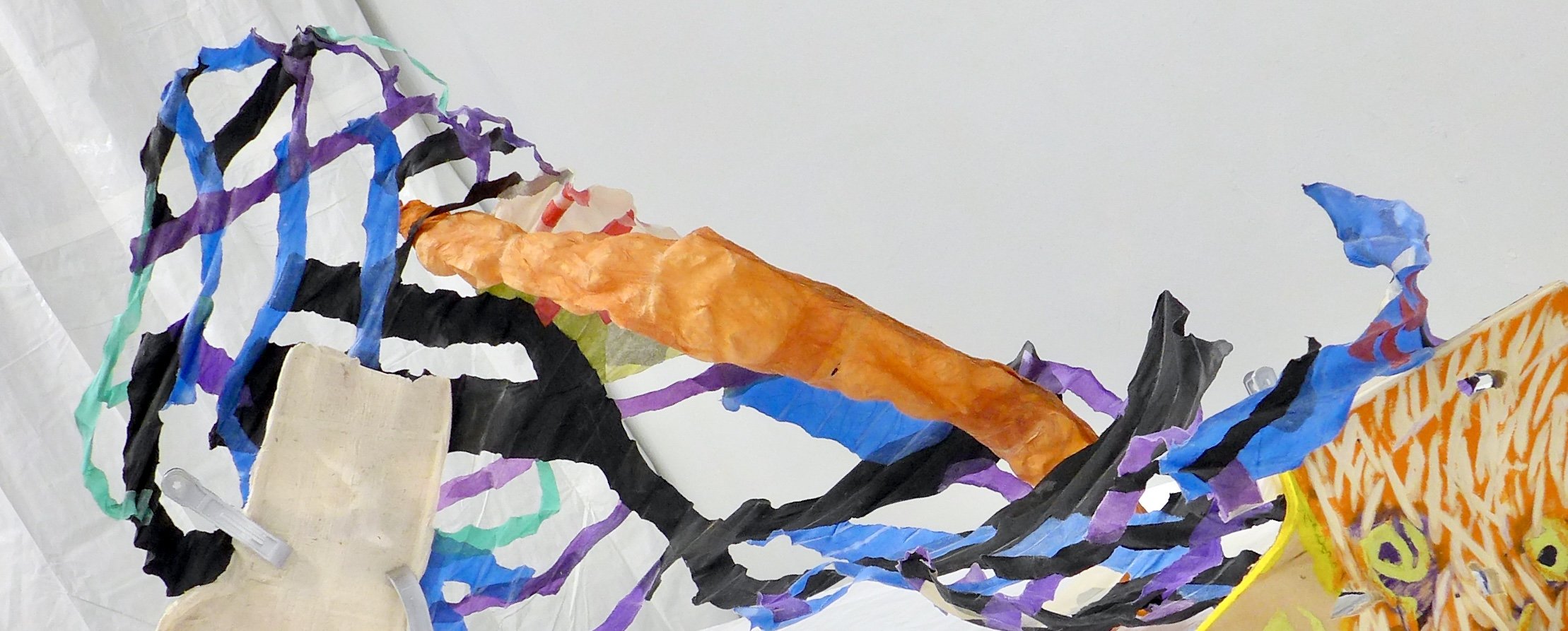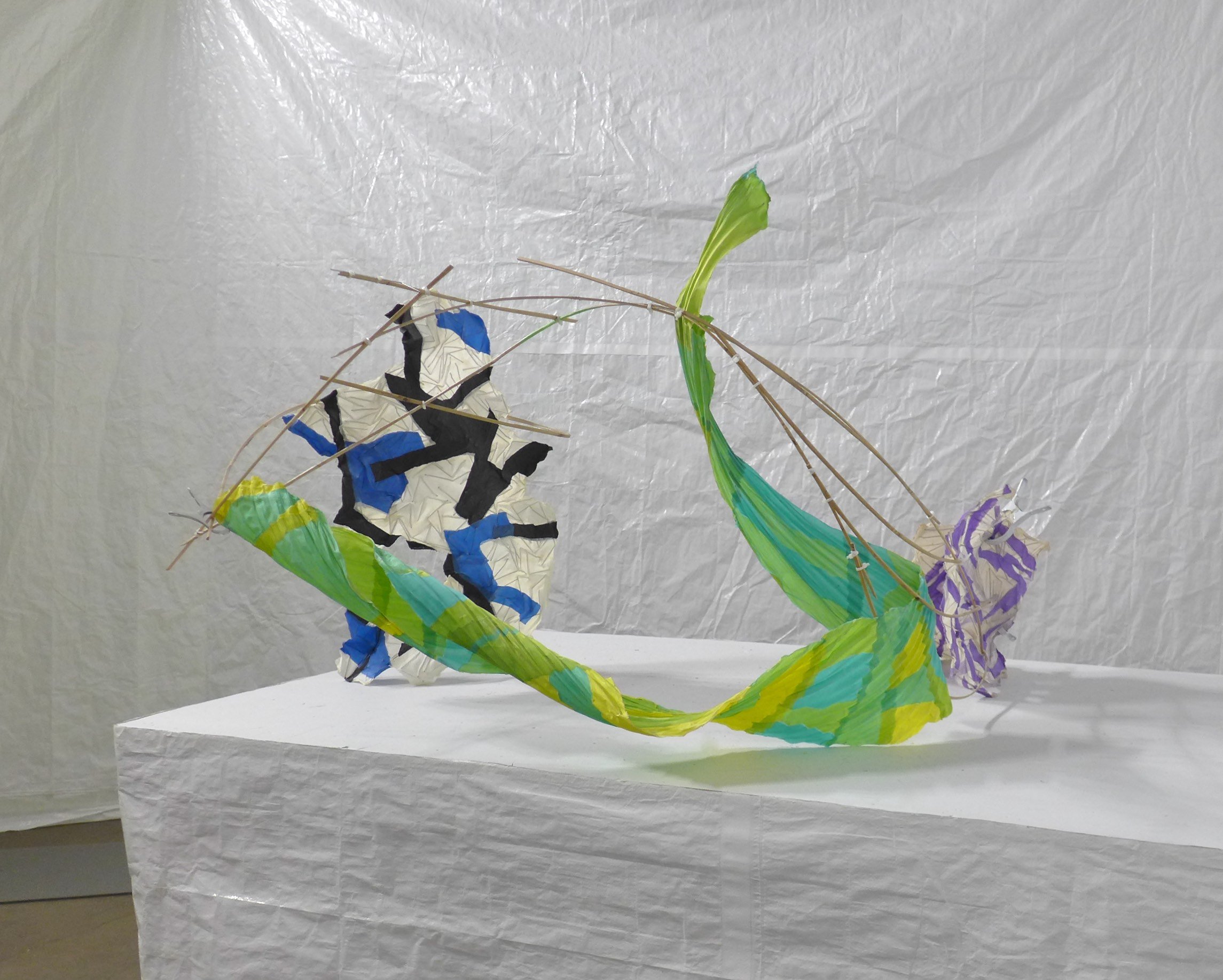casting abaca on HVAC ducting part II
This design had to be put together off the ducting because of the many slender parts.
casting abaca on HVAC ducting pt 1
Casting ducting with its stiff spiral of spring steel wire create flexible & structurally strong forms.
line drawings out of abaca paper straps
We wove straps of overbeaten abaca and then cut the weavings into 2” x 3” pieces for the 2019 Swatch Swap book.
slush pulp: bespoke drawing paper
We’ve been making pastel drawings for a while now, we wondered how we could bring the drawing and the sculpture together.
bamboo ribs, abaca skin
We have made several of these bamboo and abaca structures and we’re still learning.
how we work is discontinuous
Our working method is discontinuous
We make paper objects that we find visually alluring, but seldom think of them as sculpture.
blowouts - water spray on freshly pulled handmade paper
We deckle boxed a sheet of mixed black and white cotton pulp.
making puffers
Putting a patch of low shrinkage cotton fiber onto a high shrinkage ground like abaca produces a wonderful puffing effect.
heftier coils - part 4
The next step for our coil evolution - making them heftier and more resilient to studio and composing wear and tear.
these coils change planes - part 3
Up to now, the coils have stayed on one plane, fabricated and dried on a flat table top; however, when we used them in compositions, we liked that when they were under load they lost their flatness and twisted into 3 dimensions.
coils racing around flashing - part 2
Carving grooves in pink insulation foam board to cast coil designs seems clever, but impractical.
coils in the groove - part 1
We use a lot of hidden wire, velcro, tape and nails to attach our paper objects to each other, but we don't like hiding things; we prefer making connectors part of the work.
LandesSullivan at gmail.com












